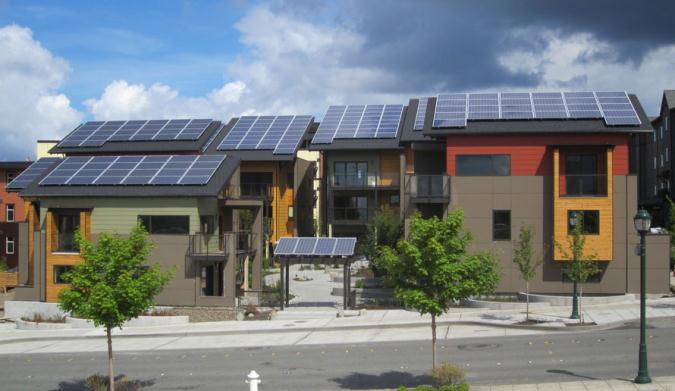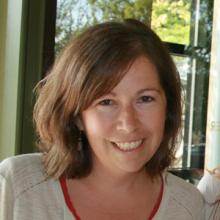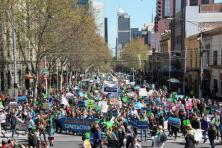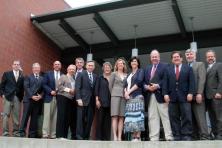City officials who want to address climate change know that lowering the carbon emissions in the built environment requires bold steps—especially in the context of population growth and increased development. Well-intentioned city officials often sign up for aggressive city climate action plans, but then falter when it comes to implementation.
One exceptional stand-out is Issaquah, WA (population 24,930), where the City’s leaders are confronting carbon emissions head-on.
A rapidly growing city in the Puget Sound region, Issaquah is no stranger to sustainability. In partnership with other jurisdictions, City staff have enabled the community to achieve the highest vanpool rate (an incredible 9 percent!) of any community in the state, and developed what is considered the most energy efficient fire station in the U.S.
The community is also home to state-of-the-art, energy efficient Swedish Issaquah Hospital. In 2013, both the fire station and the hospital are slated to receive the ASHRAE Technology Award, national recognition for their achievement in low-energy, green building design.
The City has also been instrumental in developing zHome, a net-zero townhome community considered to be the first of its kind in the US. Guided by zero-energy housing projects in England, and aiming to be an inspiration for builders, subcontractors, architects, developers, and the average homeowner, a project manager at the City began to sketch the plans for the project in 2005.
Since that initial spark, the City teamed with Built Green, King County, Port Blakely Communities, Puget Sound Energy, and Washington State University Energy Program, and enlisted developers Matt Howland and Ichijo USA. The design measures they selected were based on technologies already in existence, such as super-insulated and tight walls, double-paned windows, groundsource heating, high-efficiency lighting and appliances, and energy feedback monitors. But these measures had not been combined under one roof.
Today, zHome is a 10-unit townhome development that uses zero net energy and 60 percent less water, emitting zero net carbon emissions with clean indoor air and low-toxicity materials. It achieved deep energy efficiency—or reached the zone of what the New Buildings Institute calls “zero energy capable” buildings—and then met the net-zero goal through rooftop solar power. In the words of the project team: “zHome uses one third the energy [of a typical townhome]. That one-third is then generated on site.”
The team’s tenacity through economic ups and downs, the City leadership’s ongoing support, and a diverse public-private partnership have been key ingredients in the project’s survival and success today. Built Green is working to establish a new “z-Star” level in its nationally recognized residential green building certification program, informed by the zHome benchmarks.
Now Issaquah is focusing on how to build on its prior experiences to achieve an even bigger goal: reducing community-wide greenhouse gas emissions to 80 percent below 2007 levels by 2050. How to achieve this, in context of dramatic planned growth in the coming decades, is top of mind for Mayor Ava Frisinger and Sustainability Director David Fujimoto.
In 2012, in partnership with New Energy Cities, the City’s sustainability team did the hard work of figuring out how to answer this question through a quantitative “carbon wedge” analysis. First promoted by Princeton University in 2007, the wedge framework has helped cities such as New York and Calgary get traction on their paths to achieve their carbon reduction goals.
Mayor Frisinger spoke about this work at a convening of the Henry M. Jackson Foundation Board of Directors, other funders, and regional officials on January 25. The New Energy Cities team also presented the carbon wedge analysis work at the Issaquah City Council's January 29, 2013 meeting.
Issaquah’s leaders are using the findings to understand the order of magnitude of the efforts they must undertake over the coming decades to meet their goal, as well as prioritize which programs and projects they will pursue in the near term. Most of all, the Issaquah carbon wedge analysis has shown that the 2050 carbon reduction goal, while ambitious, is in fact achievable. Further, it is compatible with the community’s anticipated population growth and development plans.
Issaquah is not the only city in the Puget Sound region that has adopted such an ambitious carbon reduction goal. But it may very well be the only one that has taken the time to figure out how to meet that goal.





